OK, so we originally wanted to write a story on the first 4×4 ever made. But the history of 4x4s is really murky—filled with one-offs, defunct manufacturers, aftermarket conversions, and straight-up impractical designs. So it was hard to pin down what vehicle should be considered the “first.”
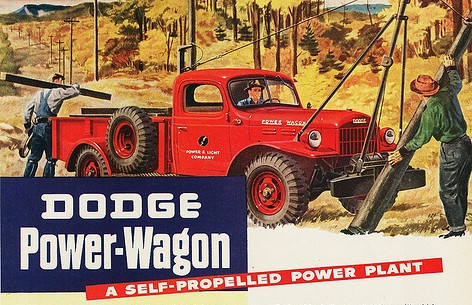
Instead, we drew a line in the sand and decided to focus on the first mass-produced 4×4 truck made in America.
And, since it celebrated its 75th anniversary in 2021, we wanted to give it some extra attention anyway. So…without any further ado…
Meet the Dodge Power Wagon
Introduced immediately following World War II, the Dodge Power Wagon bowed for 1946 with a 230 cubic inch flathead 6, good for about 94 horsepower.
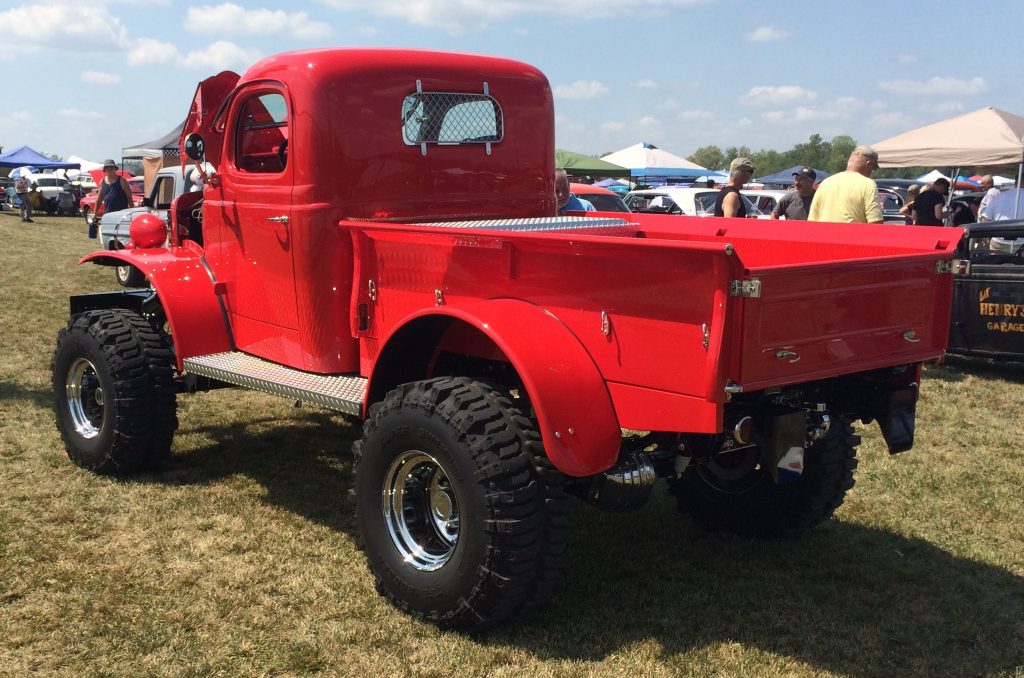
The Power Wagon boasted features that weren’t often found on earlier 4×4 vehicles as well—things like part-time 4WD with a 2-speed transfer case, a 4-speed manual transmission, and front & rear power take offs (PTOs). And while yes, the Jeep CJ-2A technically beat the Power Wagon to the market by a few months, the Power Wagon is considered America’s first mass-produced 4×4 “truck,” thanks to its traditional enclosed cab/open bed arrangement.
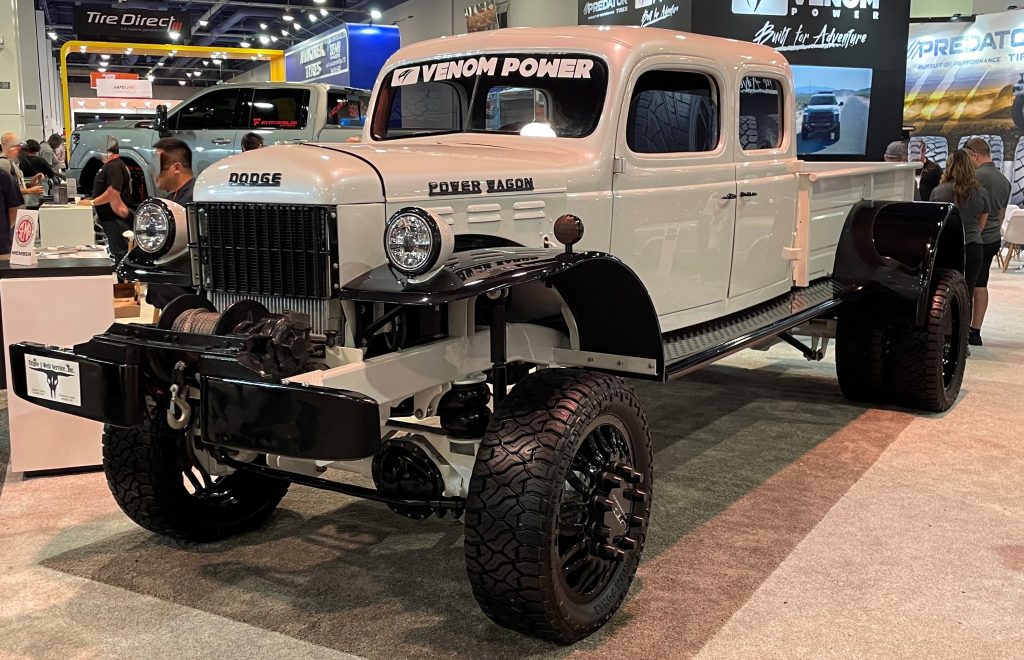
Much like Willys did with its Jeep CJs, Dodge marketed the Power Wagon to farmers, rig hands, linemen, ranchers, construction workers…basically anyone who needed a rugged vehicle that could get into (and out of) rough terrain.
The Power Wagon’s PTOs could run saw mills, diggers, drills, hydraulic pumps, capstan winches, and more, and it was common to see Power Wagons transformed into fire engine pumpers, farm plows, or tow trucks—particularly for remote areas.
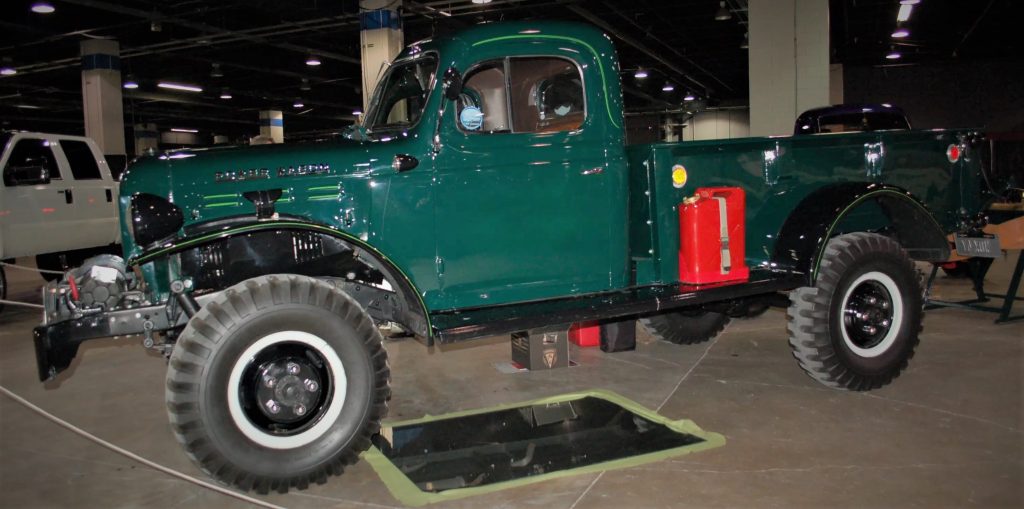
Its early success encouraged Dodge to expand the Power Wagon range to include medium- and light-duty trucks in the late 1950s too. These were designated the W100/W200 and were styled like the other C- and D-series trucks Dodge produced during the 1950s and 60s.
The original flat-fendered, heavy-duty Power Wagon was sold through 1968 in the United States, though it soldiered on in export markets well into the 1970s.
A Quick History of the Power Wagon
The Power Wagon evolved as a civilian version of the hard-working Dodge WC trucks that platooned across the battlefields of World War 2.
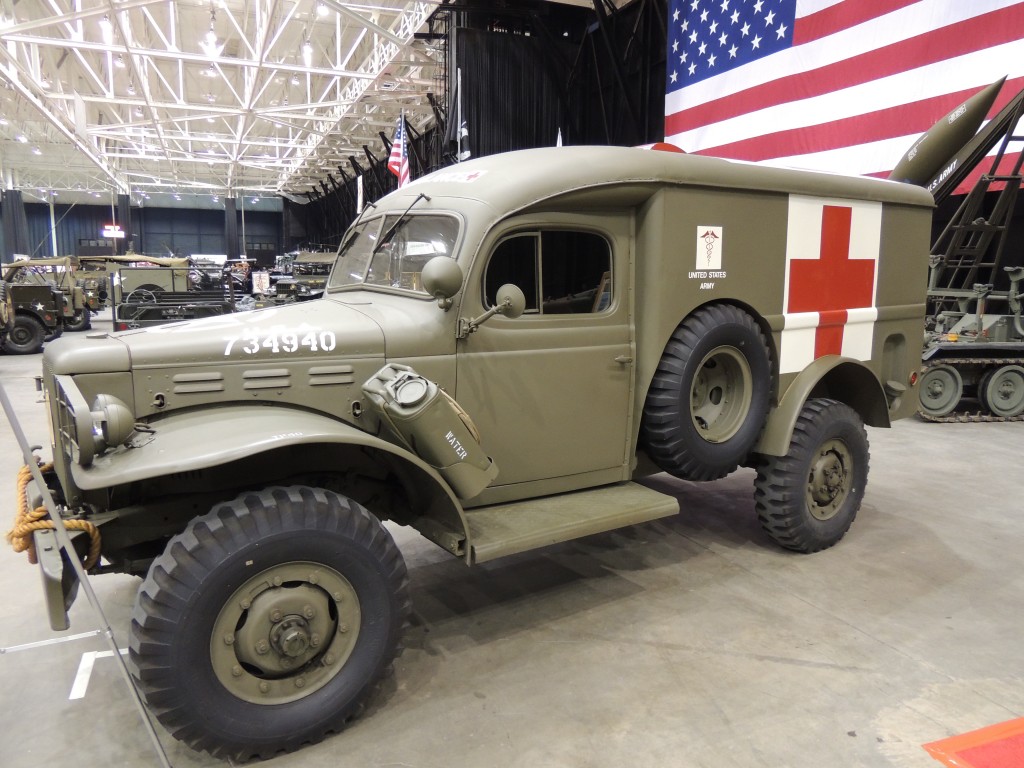
WC trucks were common sights in both Europe and the Pacific, where they adapted to several roles, including troop transport, ambulance service, and cargo/weapons deployment. The United States called on Dodge to be the main supplier of 1/2- and 3/4-ton trucks through the war.
As a 1-1/2-ton truck, the WC was configured with an additional set of rear wheels to create a 6×6.
Those military WC trucks could trace their roots to the 1934 Dodge K39, which was Dodge’s first production 4×4 truck, made specifically for the United States government.
The Power Wagon Evolves into the Modern Era
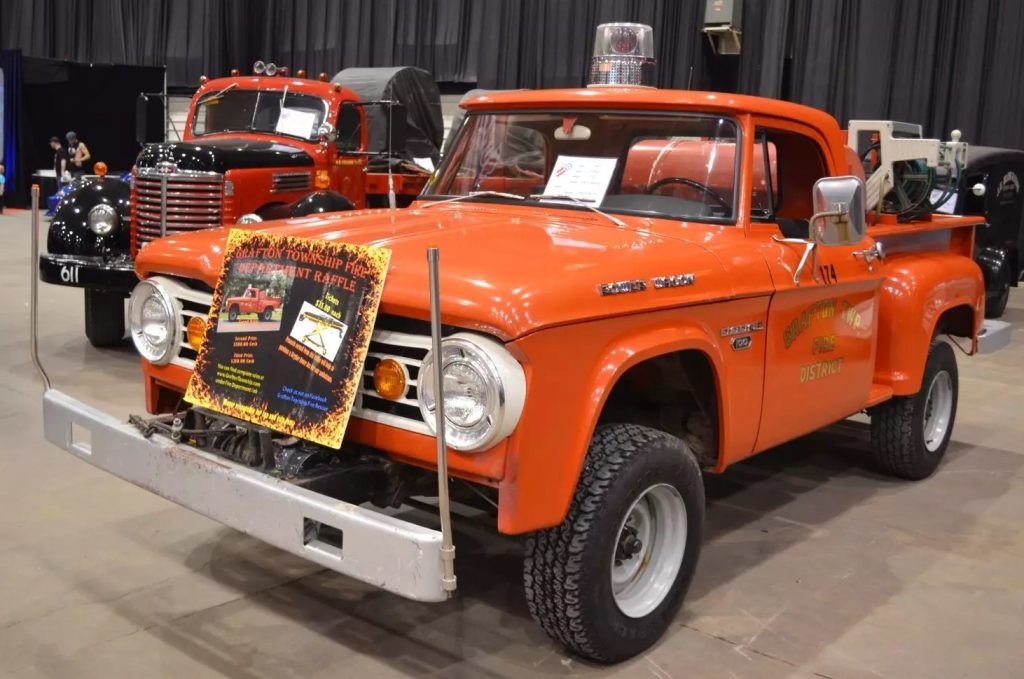
While the original military-style Power Wagon slowly faded away into obsolescence, Dodge kept the Power Wagon name alive as an option package through the 1970s on its D-Series pickup trucks. Though distinct from their earlier battlefield brethren, these later Power Wagons typically featured larger engines, beefier axles, and other rugged accouterment.
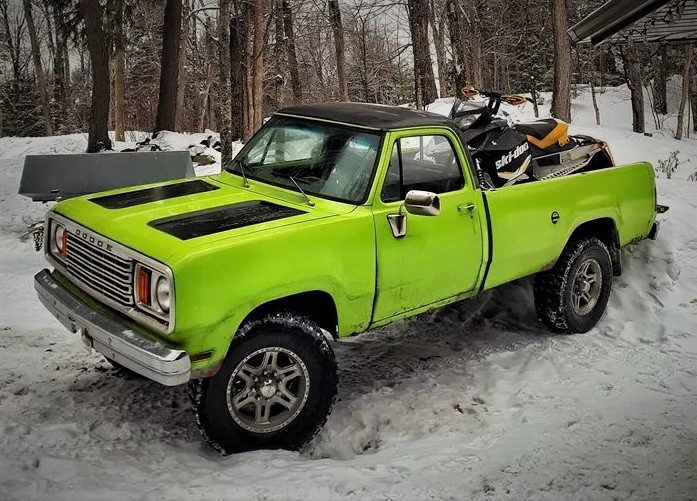
The arrival of the Dodge Ram pickup truck line in 1981 saw the end of the first run of the Power Wagon name. Over two decades later however, Dodge revived the Power Wagon as a trim level on its 2005 Ram 2500 truck.
You can still get a Power Wagon today, now under the Ram brand. Again a trim on the 2500-series trucks, the latest Power Wagon boasts an electronic transfer case, locking front and rear differentials, electronic disconnecting front sway bar, and a 12,000-lb. WARN Zeon-12 winch.
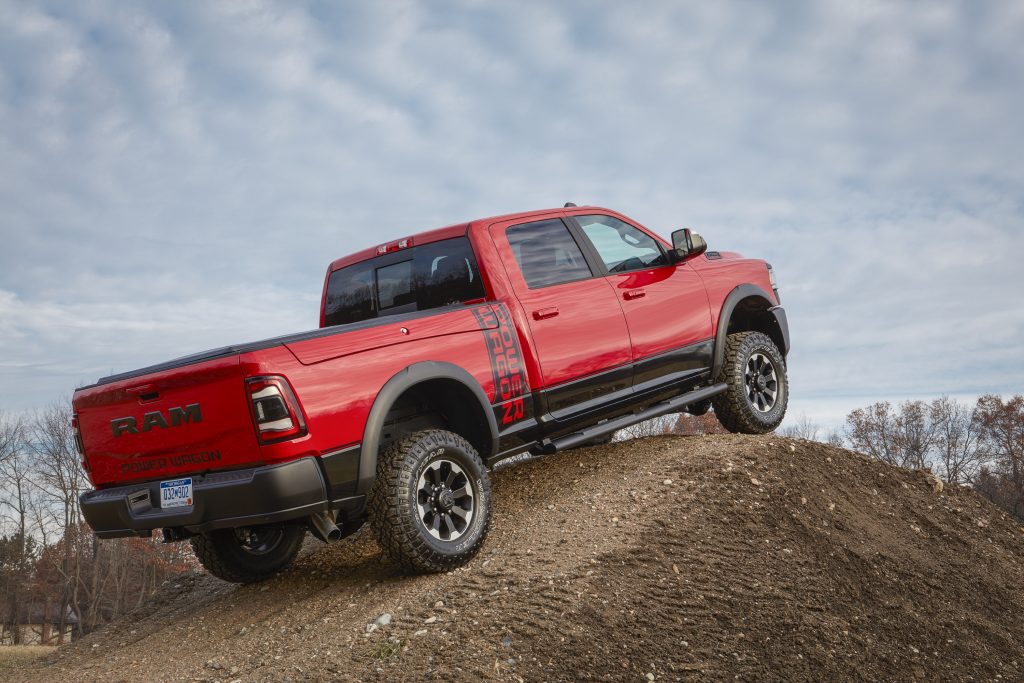
Happy 75th, Power Wagon!
From the battlefield to the brush to the boulevard, the Power Wagon has had one heck of a journey. We hope to write about it again for its 150th anniversary.
Want to see more? The company that now owns Dodge and Ram, Stellantis, has a nice, quick video history of the Power Wagon. Check it out below:

Flathead V6????? I own several of these trucks and they are a “straight flat head 6” You may have had an opps in your typing in the article.
Ugggh. Good catch Dave. It’s definitely not a Vee. I made the fix above. Thanks for heads up!
[…] The WC-series chassis came in dozens of configurations, and they served as troop transports, command cars, ambulances, panel vans, and radio trucks. The WC series lived on after the war as the popular Power Wagon. […]
I have rebuilt about 10 of the Dodge power wagons and now I’m giving up on it and I have many new parts engine parts mostly for the original 230 cubic inch inline 6 is there any clubs or people that you may know they could use something like this
Thought they were equipt with a Braden MU 2A winch.
[…] On All Cylinders: The Dodge Power Wagon: Americas 1st Mass-Produced 4×4 Truck […]